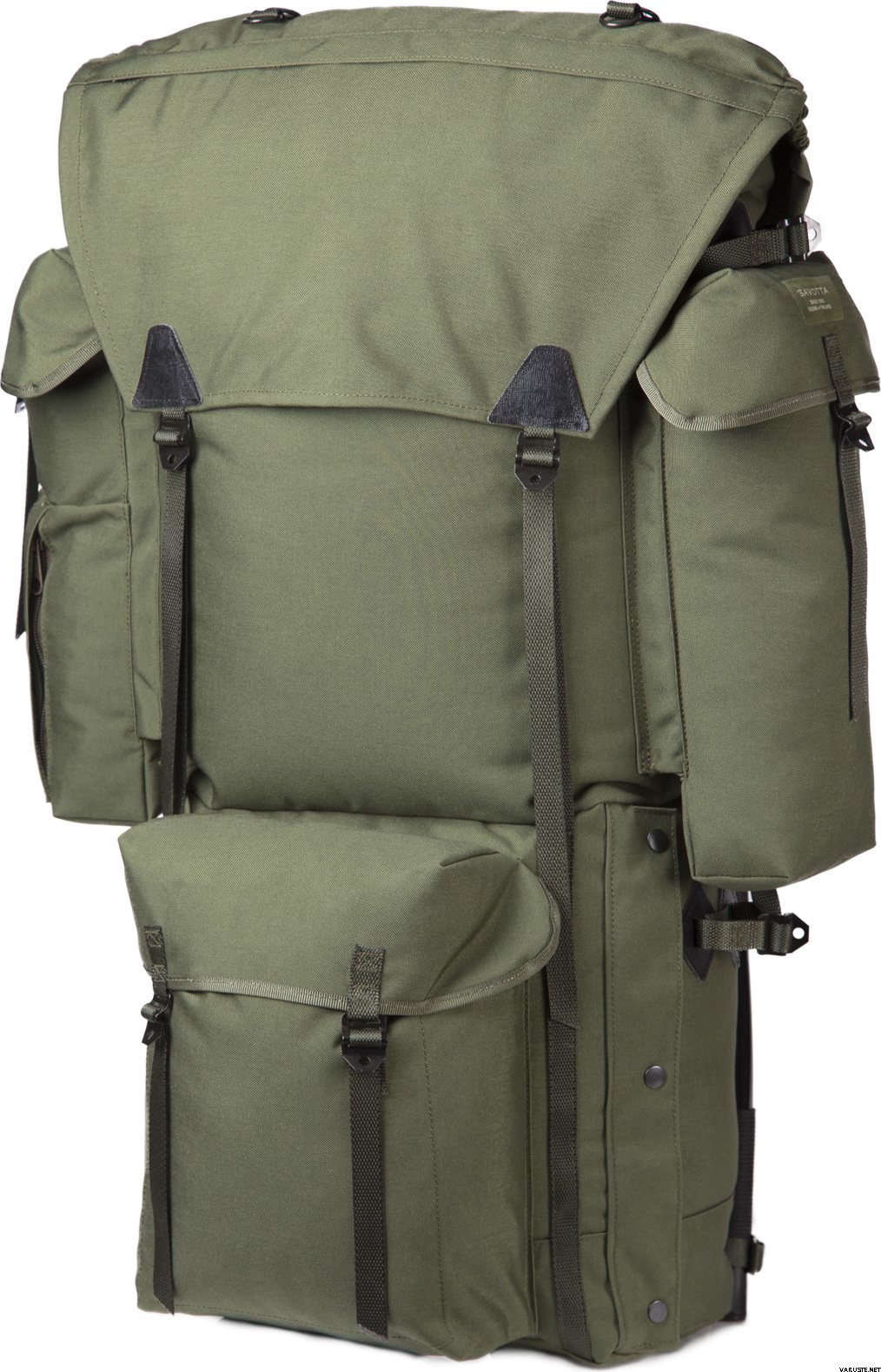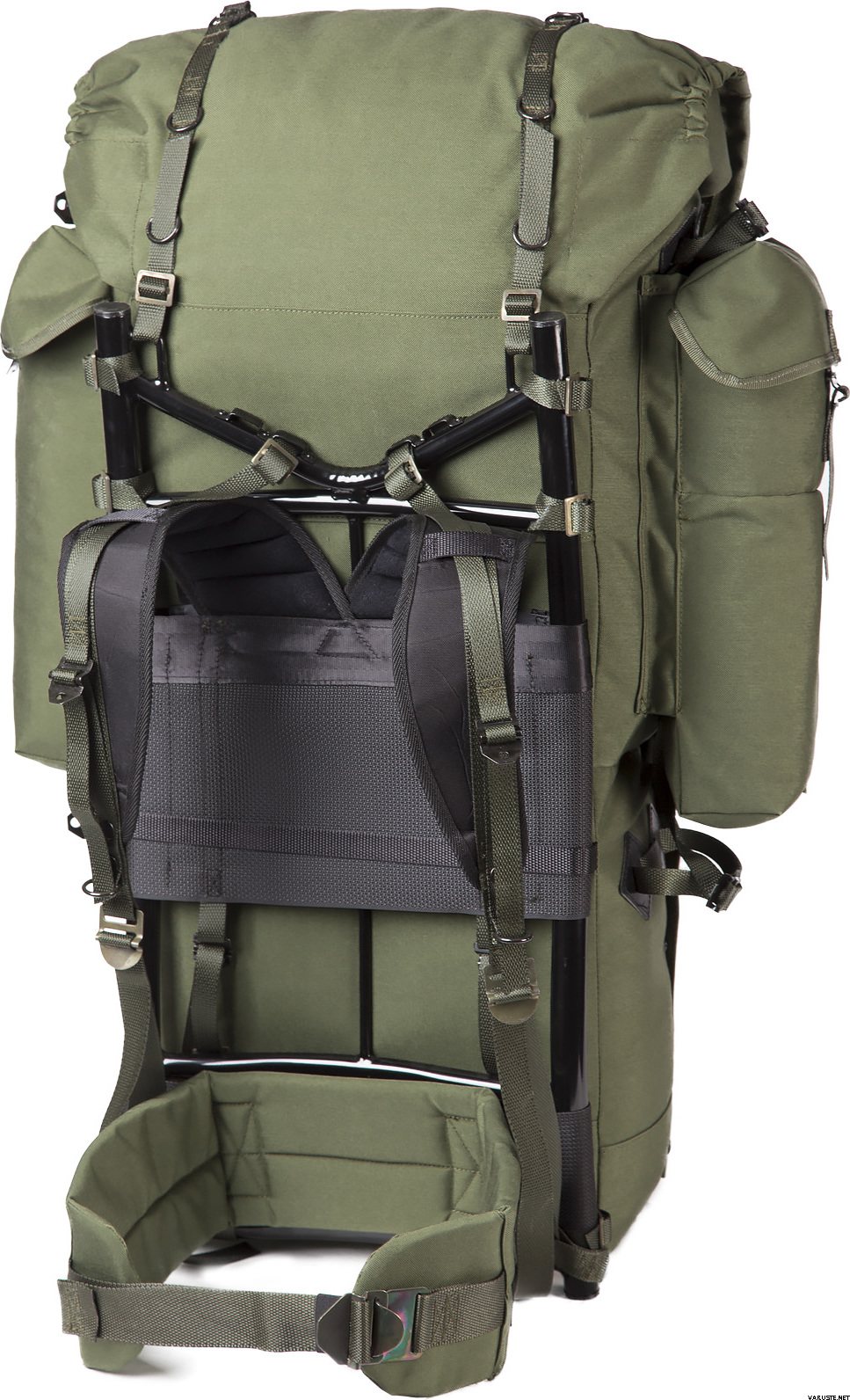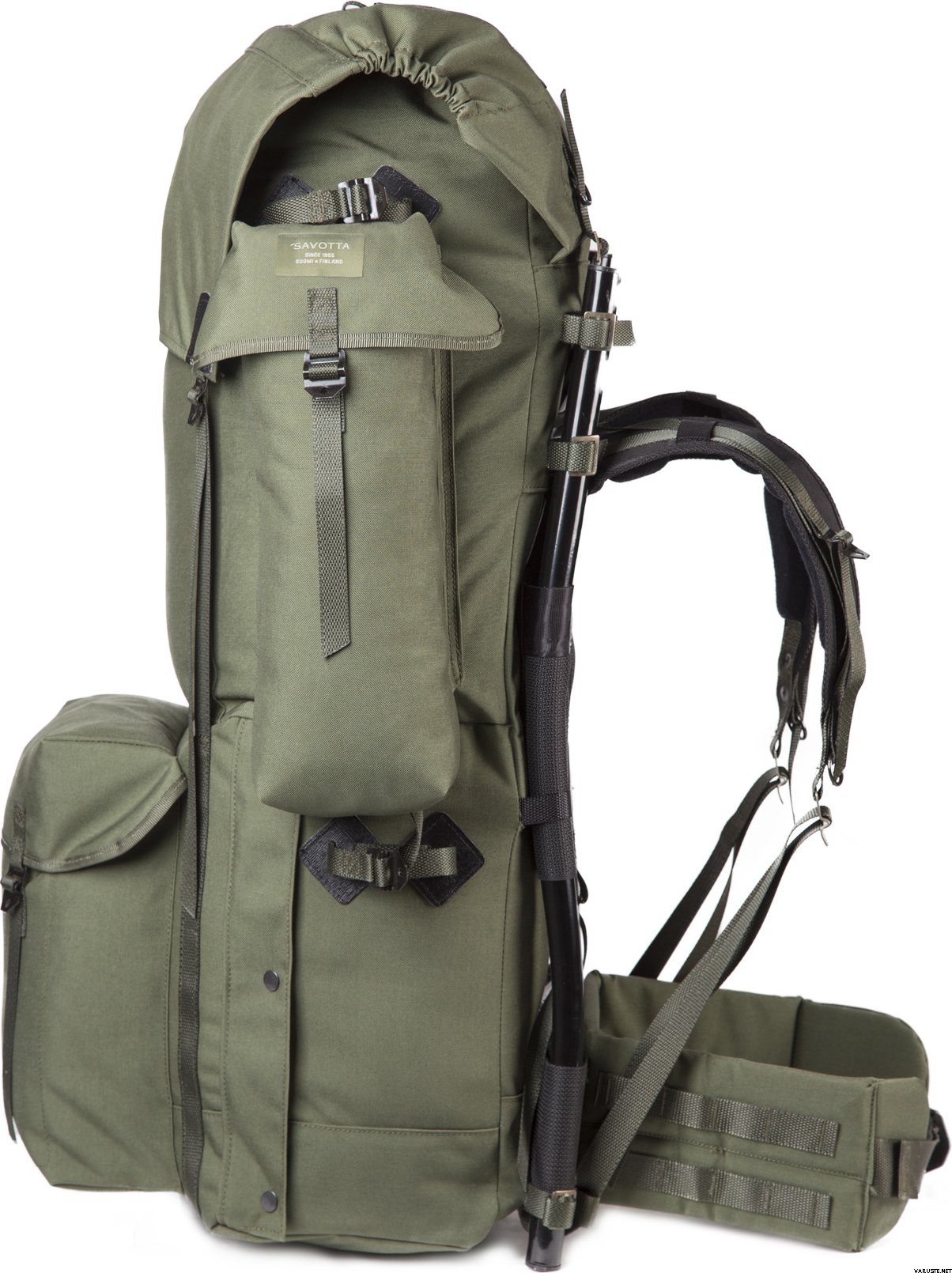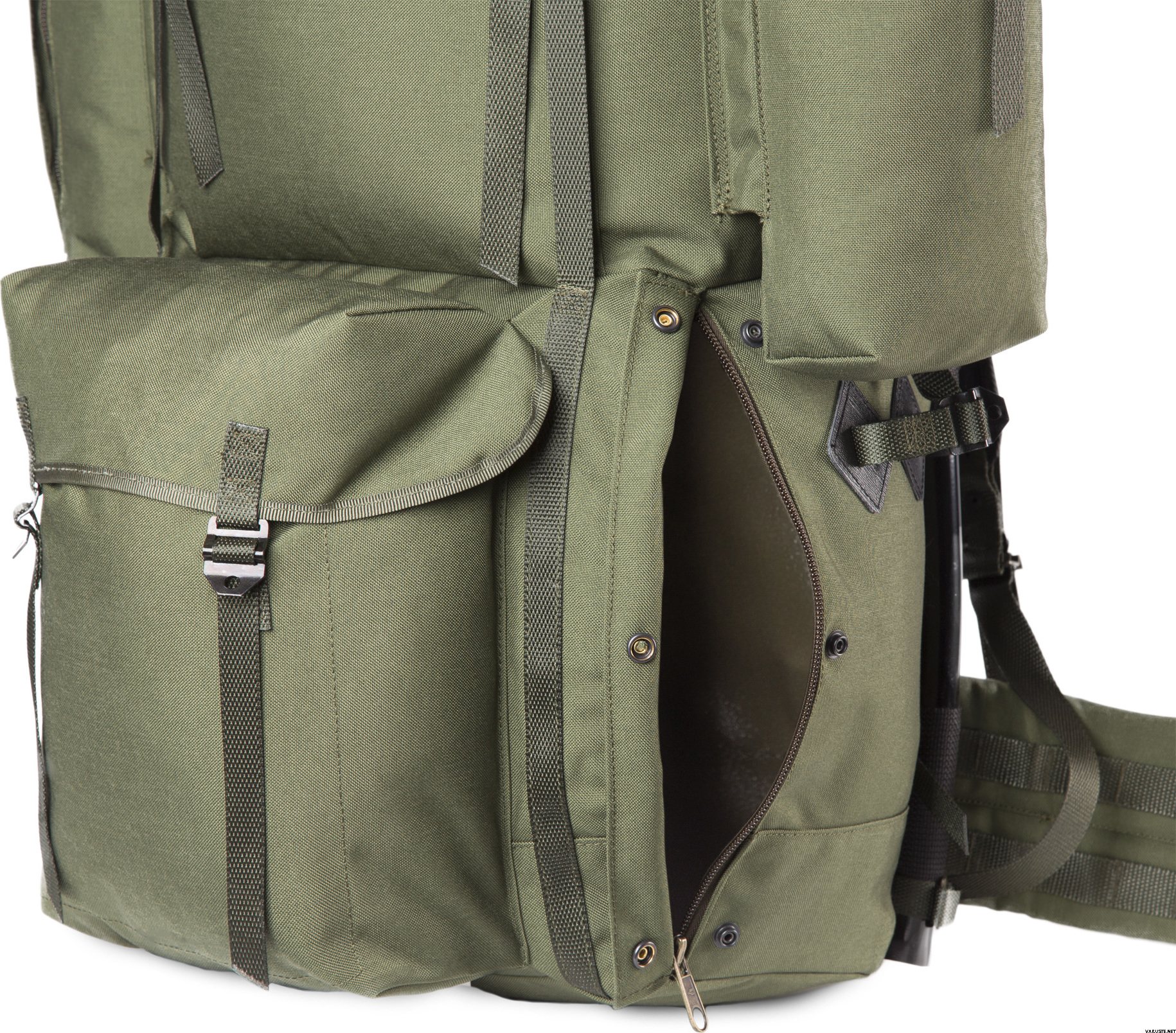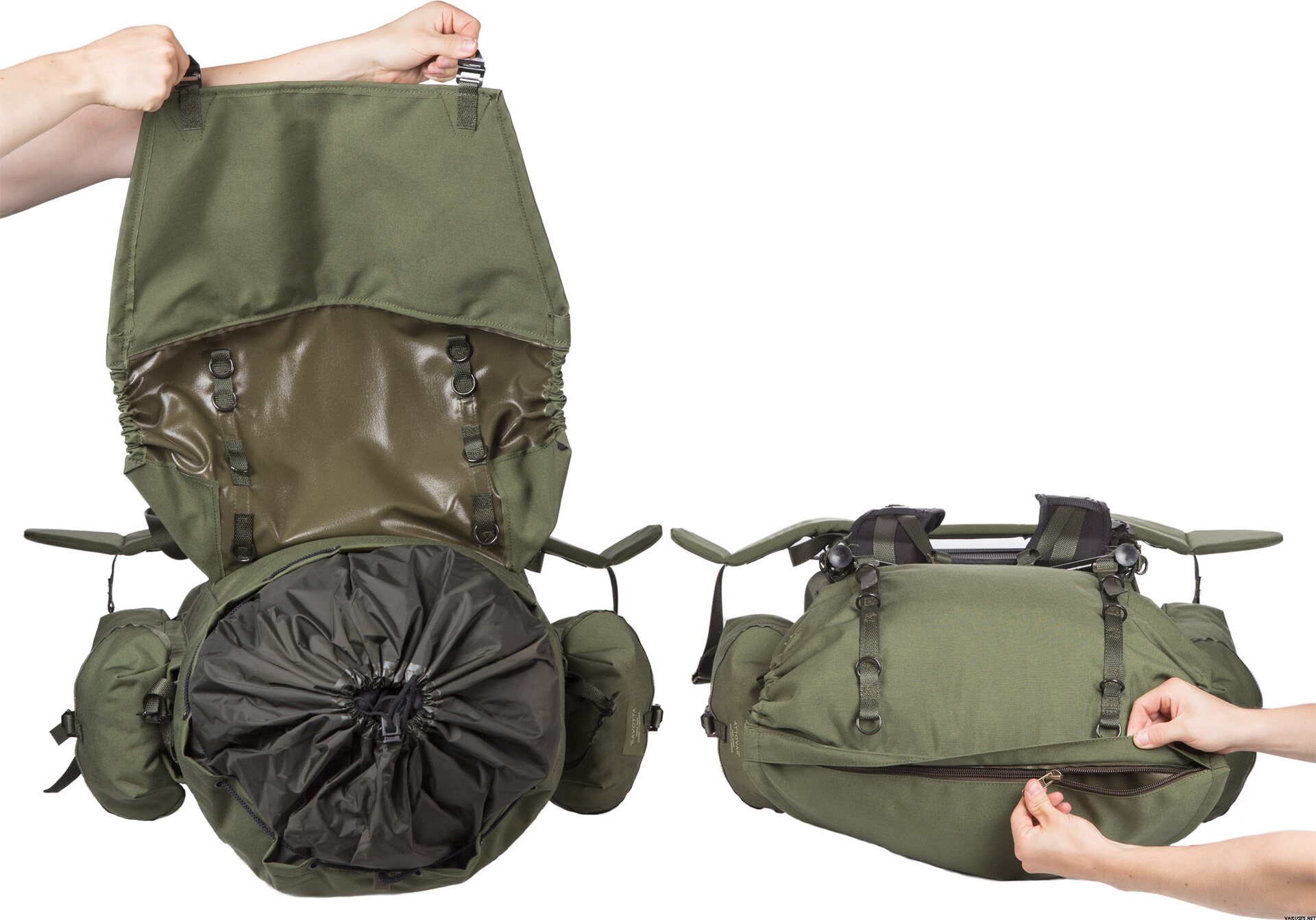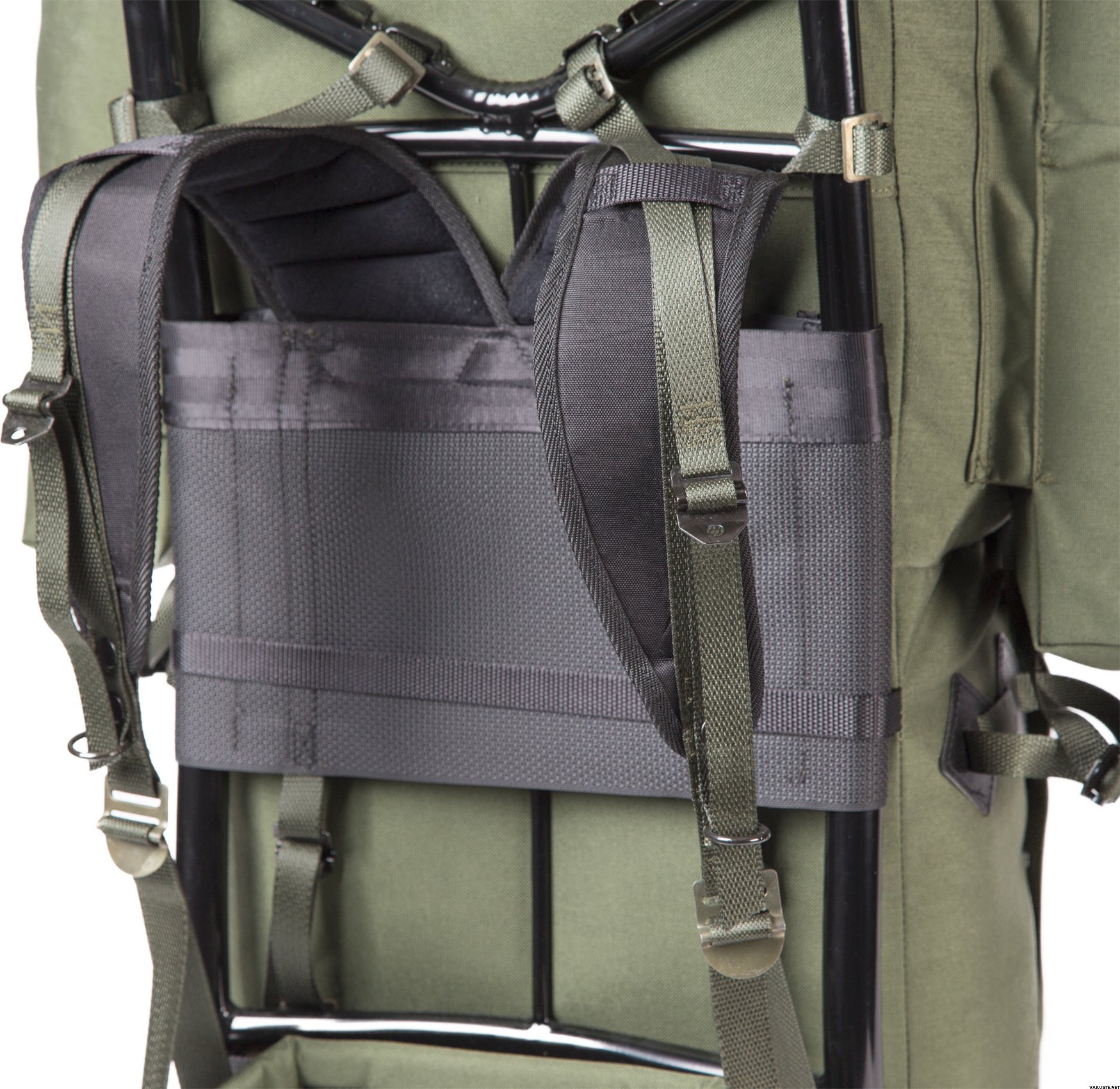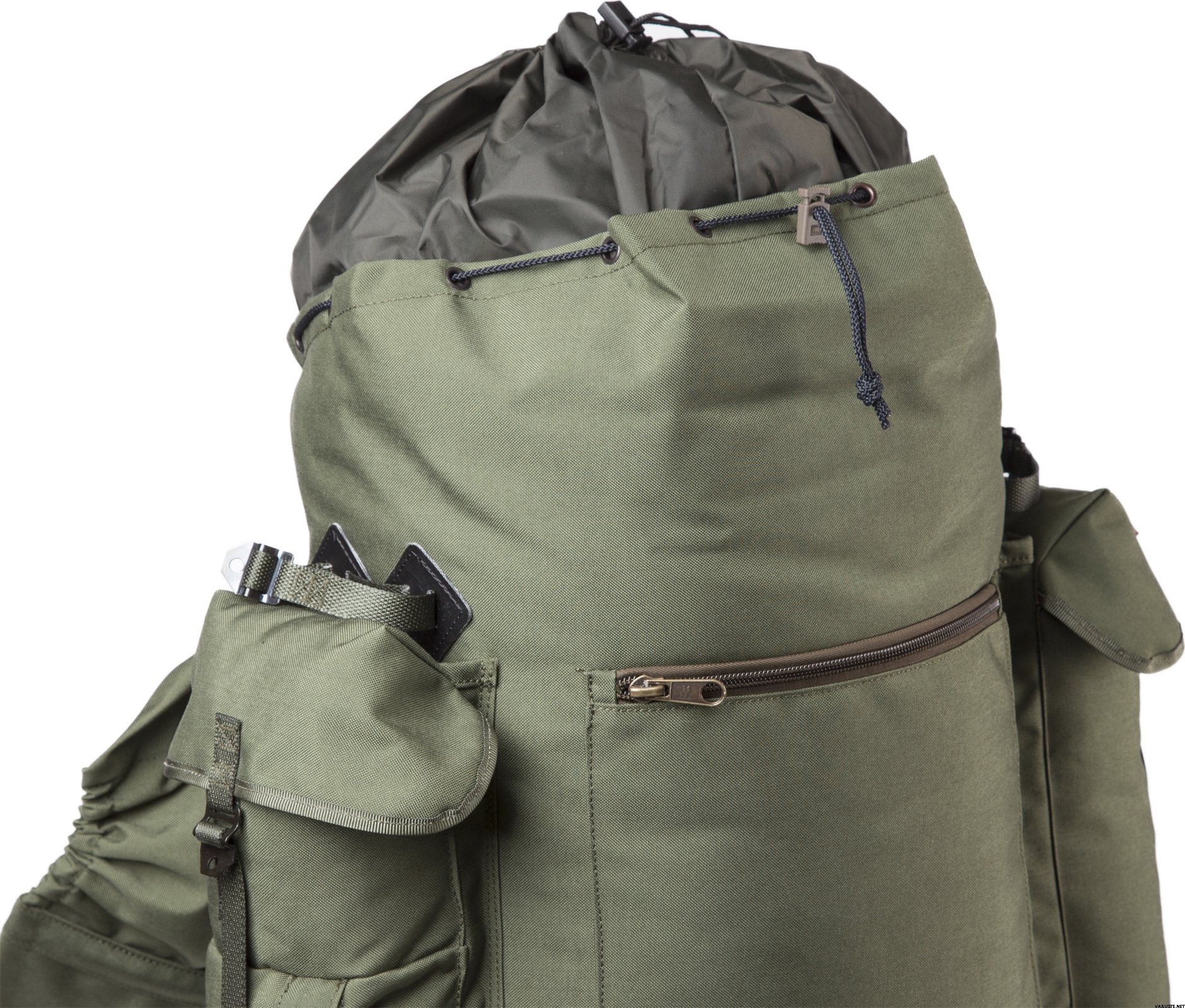
Savotta LJK
See toode ei ole hetkel müügis.
Saadavus
Ülevaated
| Üldhinnang | (4 arvustused) |
Toote kirjeldus
The special rucksack designed for the paratroopers of the Finnish Defence Forces has also gained popularity among recreational hikers over the decades. This rucksack designed for heavy-duty military use resists, due to its materials and structures, tougher handling than most of its users, such as a free fall from an aircraft. In view of its properties, LJK also suits average users and it is an excellent choice for those seeking a lifelong partnership.
The LJK rucksack was launched in 1985. Originally designed for military use, the rucksack was also warmly received among civilian users. The special features of the model include a frame without the top curve, which makes moving easier since it does not get in the way of the head. There are no pockets on the sides of the rucksack in the bottom section, which makes cross-country skiing with the rucksack more comfortable. The LJK rucksack is still used in the Finnish Defence Forces today and it is equally popular among recreational users.
A traditional external frame rucksack is at its best with a heavy load but is equally suitable for lighter outings as well. The external pipe frame allows air circulation between the bag and the back of the user, reducing the heat load significantly. Although anatomical rucksacks have taken over some turf in the rucksack market, there are still situations where nothing beats an external frame rucksack.
The top compartment of the bag (dimensions approximately 45 x 40 x 20 cm) is closed by tightening the drawstring opening which is secured with a waterproof protective collar which enables overpacking as well. The opening is covered with a generously sized flap which is secured with straps. The straps are long enough for carrying, for example, a sleeping bag or mat under the flap. When necessary, the straps can be easily extended with the supplied detachable straps. The top and bottom compartments of the bag are separated by a built-in divider.
The flap of the top compartment has a flat pocket for small items (dimensions approximately 25 x 45 cm), which can also accommodate larger items that need to be easily reachable. The outside of the top compartment features a flat map pocket with a zip closure (dimensions approximately 30 x 30 cm).
The bag’s bottom compartment (dimensions approximately 35 x 35 x 20 cm) opens on both vertical sides with a zip. The zips are protected with a press stud flap. The flaps should always be fastened carefully because they take some of the weight and strain off the zips.
The side pockets (dimensions approximately 40 x 10 x 7 cm) are closed by tightening the waterproof protective collar which is covered with a flap that can be secured with straps. The left side pocket is divided into two compartments with a built-in divider. The lower compartment is accessed via the side zip.
There is a large outer pocket (dimensions approximately 32 x 25 x 10 cm) in the lower back, which is closed by tightening the protective collar. The pocket is covered with a flap secured with two straps. This pocket is ideal for packing items that need to be easily reachable during the hike, such as a camping stove and food.
There is a generous number of attachment loops on top of the flap and inside the main compartment. With these, it is possible to tie even large loads (such as the beloved Sissi tent) on top of or under the flap securely by using detachable straps. The loops on the inside of the flap are perfect for attaching a sleeping mat. Especially a military-style tent mattress can be very conveniently attached to these by its elastic bands.
Axes or other long, narrow supplies can be carried behind the tunnel-shaped side pockets. The attachment points with straps above the side pockets secure the attachment of the supplies.
The bottom corners of the shoulder straps have loops which act as attachment points for small items, such as water bottles.
The frame of the carrying system is the strong aluminium pipe frame of the LJK model. Contrary to civilian rucksacks, LJK does not have an upper curve because the curve gets easily in the way of the head when it is necessary to move in rough terrain. Furthermore, the frame of LJK has been reinforced with additional support blocks. The shoulder straps and hip belt are firmly padded and anatomically shaped. The buckle of the hip belt can be undone very quickly with one hand. It is a very valuable feature in a possible emergency situation. The buckled chest strap provides extra comfort and support for carrying.
The continuously adjustable (in length) supportive carrying system and hip belt of the rucksack can be adjusted to suit users of all different heights and sizes. It is possible to adjust the centre of gravity of the shoulder straps even while walking by tightening and loosening the straps attached to the top of the frame. The centre of gravity of the rucksack itself between the shoulders and the hips is adjusted by loosening and tightening the shoulder straps and hip belt.
External dimensions: height 85 cm, width 55 cm, depth 30 cm.
Capacity: 80 l.
Weight: 3.70 kg.
Materials: fabric 1000D Cordura, polyester straps, metal buckles and Kroko zips.
Frame: DUR aluminium.
Colour: olive green.
The product has a 10-year guarantee against material and manufacturing defects.
Monen mielestä paras rinkka kovaan ja pitkäikäiseen käyttöön. Korkealle hinnalle saa rutkasti vastinetta.
Sugu
Mehed, naised
Kaal
3,7 kg
Garantiiaeg
120 kuu(d)
Päritolumaa
Kommentaarid
| Üldhinnang | ☆☆☆☆☆ |
 — Näita originaali
— Näita originaaliSelle hinna eest peaks seljakotil olema rinnarihm ja parem puusavöö. Mina isiklikult panin Fjällräveni rinnarihma ja Savotta 1200 vöörihma, millel on palju rohkem polsterdust. Nüüd on sõrmust veelgi parem kaasas kanda. Isegi kui õmbleksite PALS-i silmuseid, hakkaks isegi see jope tunduma täiuslik, vähemalt kui mõelda sõjalisele kasutamisele!Isikliku kogemuse põhjal ma selle koti peale seda rahasummat ei kulutaks, kui sama hinnaga saab kaks Deuteri rosnat (Deuteriga isiklik kogemus puudub). Matkasõber rääkis, et kodupoolel on Intini LJK-st (vana viileke mudeliga) parema kandevõimega rucka. Võib ka olla, et tüüp pole veel pidanud kandma nii raskeid koormaid, nagu Indias tavaliselt LJK-d veetakse. Lisan 1/06 kommentaarile, et kott ei hoia midagi kuivana, kui just varustus pole prügikotti pakitud (vajalik). Peataskust tuleb kõik välja kaevata, mis tavaliselt tähendab varustuse maapinnale laiali laotamist, et põhjas olevate vahetusriieteni jõuda. Suure alumise tasku mõlemal küljel olevad külgmised tõmblukud lähevad laiali. Näiteks Vekaranjärvi varustuslaos pole tervet ratast, mida vahetada, sest liiga paljudel on lukud katki. Alumises taskus on lahinglaskemoon, mida tuleb vahel pakkida kolmepäevaseks vajaduseks, kui lukud on kõvad (pange tähele! see on lahingumoon, millel on palju lisavarustust). Sõrmusega kaasas olev päevakott on eriti mugav lühikestel jalutuskäikudel. Seljakoti aasasid tõmmates saad mehe kerge vaevaga mööda maateid lohistada. Kangas on vastupidav, kuid lukud valmistavad pettumuse (päevakoti suur tasku läks tavakasutusel katki). Kandmisomadusi ei oska eriti mainida, kuna pole viitsinud rinnaosa pikkust endale sobivaks sättida, seega on ka puusavöö valel kõrgusel. Mõnel inimesel kipuvad abaluud lõdvenema ja kui selg on küürus, on keha keskne toru tunda läbi selja otse vastu selgroogu. Rõngas on head väljas paigaldusvõimalused. Vibusaag ja kirves on kergesti kaasaskantavad. Võite jätta isegi päevakoti raami külge rippuma ja see ei takista matkamist (suupisted ja joogid käe-jala juures). Ülemise klapi kinnitusrihmade alla mahub süles lõhutud küttepuid. Telki või kaminat saab rattaga hõlpsalt teisaldada, kui vastupidavust piisab. Allosas on spetsiaalselt matkaveekeetjale mõeldud tasku (taskusse mahub lisaks 0,5l piiritust ja vihmakeep). Ma ei tea, et ühegi teise tootja rinkal oleks samasugune võimalus kogu tarneaja jooksul rinkal istudes toitu valmistada. Eriti tore omadus, eriti pärast pikka reisi: vesi ja toit käeulatuses ning samal ajal saab jalga puhata.Aasta enda jooksul läks liigsest kaalust kaks tükki katki, kuid teisalt pole eriolukorras kandmiseks sellist raskust vaja. Seljakoti kinnituspunktid ebaõnnestusid mõlemal korral. Suurepärane pakk võib kanda 20-30 kilo, aga tõsiselt võetuna vajadusel ka 50-60 kilo. Rihmade pingutus vahel libiseb, väikese remondiga peavad vastu.Kaubamärk

